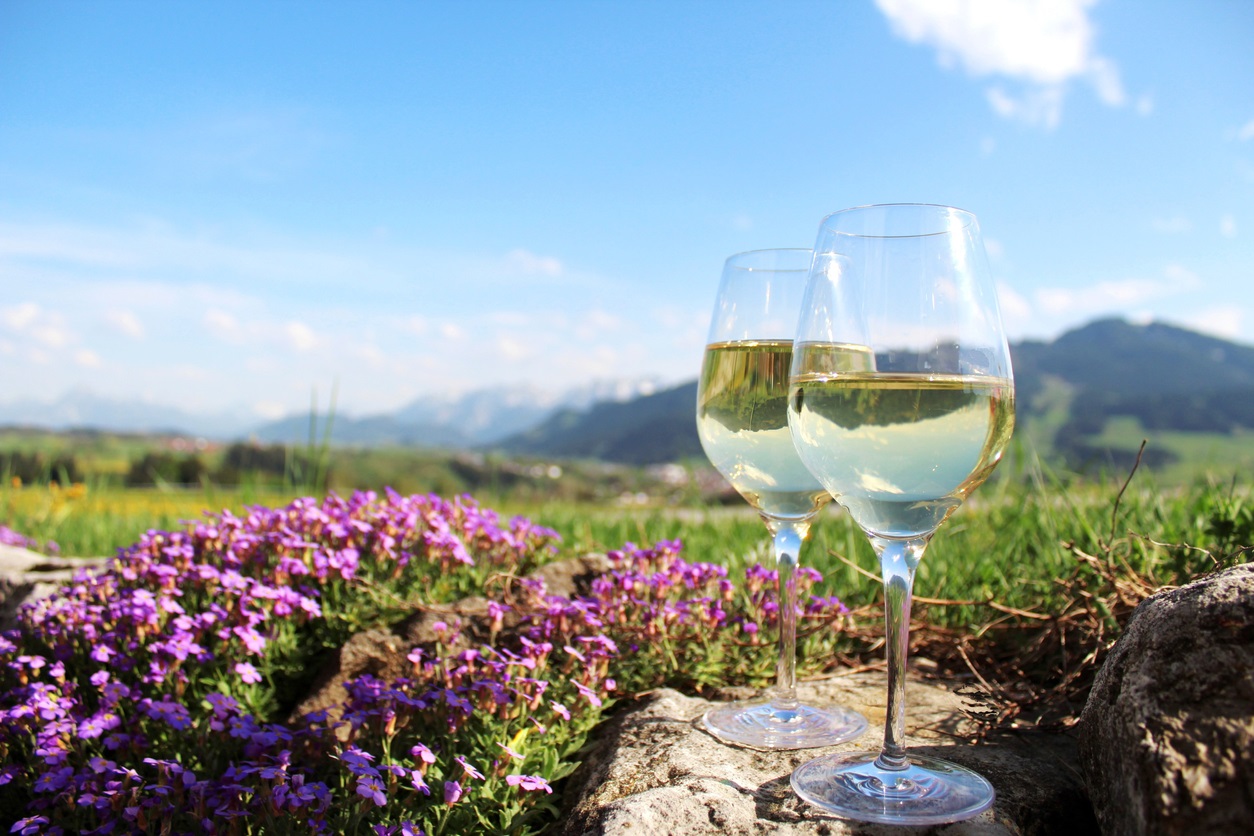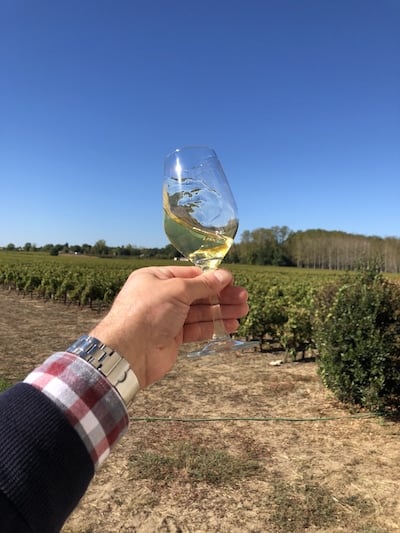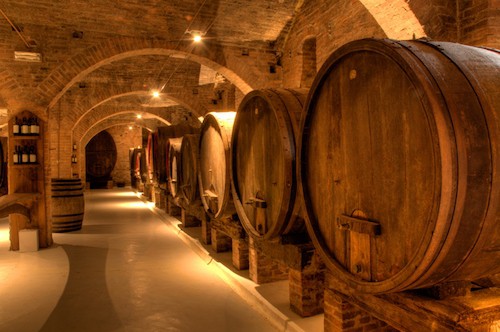Wine enthusiasts travel to learn about growing regions and experience that elusive sense of terroir. Writers wax poetic about how it conveys a sense of place to reflect a snapshot of time. This want to feel a wine’s origin is relatively new, introducing a set of expectations for the wine industry on how they deliver those experiences. But the responsibility for successful wine touring also belongs to the seekers. How can we be good (or better) at being a Winetraveler?
Enotourism (wine tourism) had its start in the 1950s[1] with gains through the ‘60s and ‘70s, leading up to the Judgment of Paris[2] where California wines went up against renowned French houses. Bolstered by the success of new versus old world, it was a moment of arrival that producers ran with. Cellar door and farmgate wine sale legislation caught up (in British Columbia it was the 1980s), allowing producers to realize another sales channel that, depending on the business model, can have a high-profit margin.
RELATED: 15 Tips To Plan The Perfect Wine Vacation
By the 2000s, wine tourism had a growing foothold in North America and other parts of the new world including Australia, South Africa, and New Zealand. Where once it was a luxury to visit a French chateau, new wine tourism put demands on Europe and brought a rising tide of us budding oenophile tourists to parts previously more traveled by those working in the wine industry. Regions found themselves accommodating visitor expectations and catching up to the new world.
As wine tourism grows, its interpretations expand and diversify. Experiences can run the gamut from simple tasting on barrels near the cellar so the staff can play double duty and watch the ferment between pouring samples, to large operations offering fully guided tours through vineyards with wine pairings en plein air. Some have an educational focus, like multi-wine tastings with a professional where topics get technical. Others are introductory, and tasting rooms at wineries are more often the norm than the exception even if staffed by that double-duty cellar worker.
RELATED: 6 Kinds of Wine Tasting Experiences You Can Try
RELATED: Here’s Why You Should Be Investing in Experiences
Whatever the experience, producers are realizing and continue to learn the value of inviting people to their product. But the onus on successful wine tourism doesn’t rest with the winery; in all of this, the wine tourist is also responsible for ensuring their experience is positive and knowing what they’re looking for. Not sure what that means? This should help.
What do you want? (and be honest)
It’s not every product that offers us an opportunity to build a relationship with it in quite the same way as wine, although beer / cider / spirits are following suit. Rarely will you have a chance to tour the barns and taste a steak before you choose one for that evening, but we now expect that with wine. So, when we can have a wine experience it behooves us to ask ourselves what we want out of it. And if you’ve watched or read Sideways[3], please forget everything you think you know about wine touring (and do try the Merlot).
- Classic: Book a wine tour through a reputable company. Whether it’s a day trip on a shuttle with pre-determined stops or an all-inclusive to a remote region of your dreams, putting your experience in the hands of a professional can be a good way to find things you didn’t know you were looking for.
- Exploratory: Drive or cycle around a region on your own, map in hand from the local tourism office (or from Winetraveler), and ask for recommendations from each winery on what should be your next stop; it won’t be Bottle Shock[4], but it will be authentic in a way that suits you.
Be Prepared (this means pre-reading)
Take advantage of those who have toured before you and read up. There’s no sense exploring a region that specializes in full-bodied red wines when you prefer lean acid bombs, unless you’re open to change. It’s more than choosing where because how to experience the area is just as important. If you love cooking, choose a culinary and wine adventure. By the sea, in Spain, where food and wine tourism is flourishing. If outdoor adventure is your jam, regional cycling tours (guided or not) pair activity with discovery so book a tour… in Argentina because you also like bold red wines and meat, which is everywhere. Find what and how you want to tour, and a little homework will go a long way.
Don’t: expect the same amenities as home – you’re a guest now, and the host gift will be to leave your expectations at the door so you can enjoy the hospitality offered.
Do: research to find the best match for your tastes with an area’s specialties, or prepare yourself for an adventure and try something new.
In The Tasting Room
This is the most accessible point of contact for taking your wine relationship to the next level and often the first place you’ll fall for a new-to-you wine or region. Most wineries now have tasting rooms although protocols are inconsistent: some charge for wine tastings and others don’t, dogs may be welcome (or not), the same goes for groups, and appointments could be required. Like wine, no two tasting rooms are the same but there are a few universal approaches to help you have the best tasting experience possible.
Don’t: wear perfume, cologne, or scented items as it interferes with the tasting experience (yours and others); arrive with more than six people without calling ahead; disparage the wines if they’re not to your taste.
Do: ask questions when you have them; make use of spittoons; share the tasting bar if the room is full; be polite with the staff hosting you; buy the wine you can’t live without.
In The Vineyard
When wineries say their vineyard tours are “rain or shine”, they mean it. Hope for the best while being prepared for possibly inclement weather, rough terrain, loose rocks, bugs, heat, cold, wind, rain… and if you’re lucky a glimpse of the beautiful something that is the elusive terroir. Trekking through a vineyard can be relatively easy or somewhat challenging depending on the location and how rustic the winery. It helps to find out ahead of time what’s expected of you, like footwear (opt for sturdy) or taking photos (ask permission).
Don’t: assume anything. From mobility and access points to typical weather conditions, things can and do change. If you have specific needs, get in touch before you go.
Do: ask questions, and dress/pack accordingly. Take a bottle of water and maybe a snack, depending on the duration. A reusable water bottle is your best travel companion.
In The Cellar
Cellar tours vary depending on the size of the operation, whether it’s form over function. Larger operations can have a ‘public’ cellar, while others might be open to visitors but are more in the working winery category. It comes back to the uniqueness of wine tourism: rarely in any other industry do we ask to see behind the curtain. Think of it as putting your house for sale and living in it while keeping it in show condition, wet towels and all.
Don’t: go off the designated path even if someone else does. Whether pretty form or actual function, the cellar is where the poetry gets into the bottle and that requires equipment. You’re at someone’s place of work and we want everyone to end the day safely.
Do: ask all the questions because this is where the poetry gets into the bottle. Things can get technical and geeky in a way that goes beyond those pastoral vineyard scenes, with barrels and tanks and hoses and pumps and gravity-fed systems and so much more. Screw cap or cork? Ask it here.
Happy wine touring days to you. Remember – there are no wrong questions, use the spittoon when you can, and you buy the bottle you love.
Additional Sources:
[1] https://www.businessdestinations.com/featured/the-new-world-of-wine-tourism/
[2] https://www.npr.org/sections/thesalt/2016/05/24/479163882/the-judgment-of-paris-the-blind-taste-test-that-decanted-the-wine-world
[3] https://www.imdb.com/title/tt0375063/?ref_=fn_al_tt_1
[4] https://www.imdb.com/title/tt0914797/


